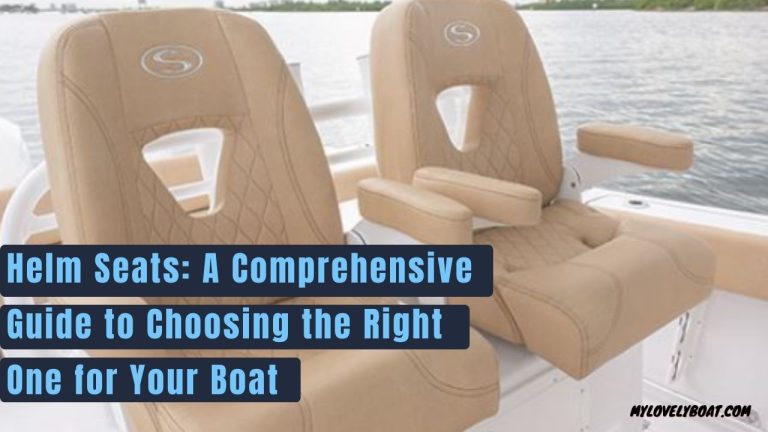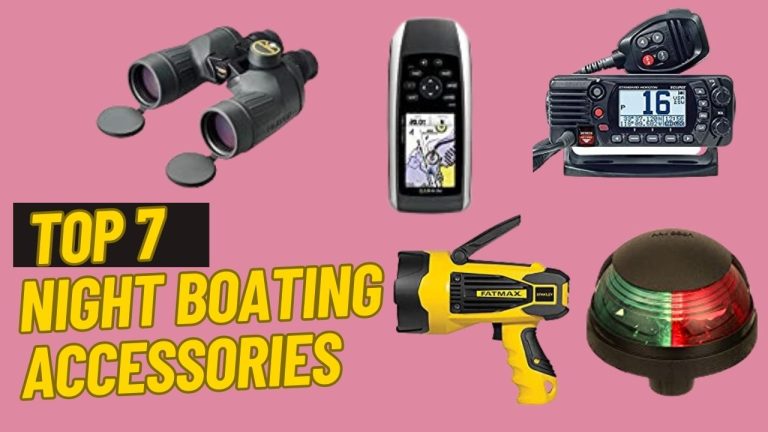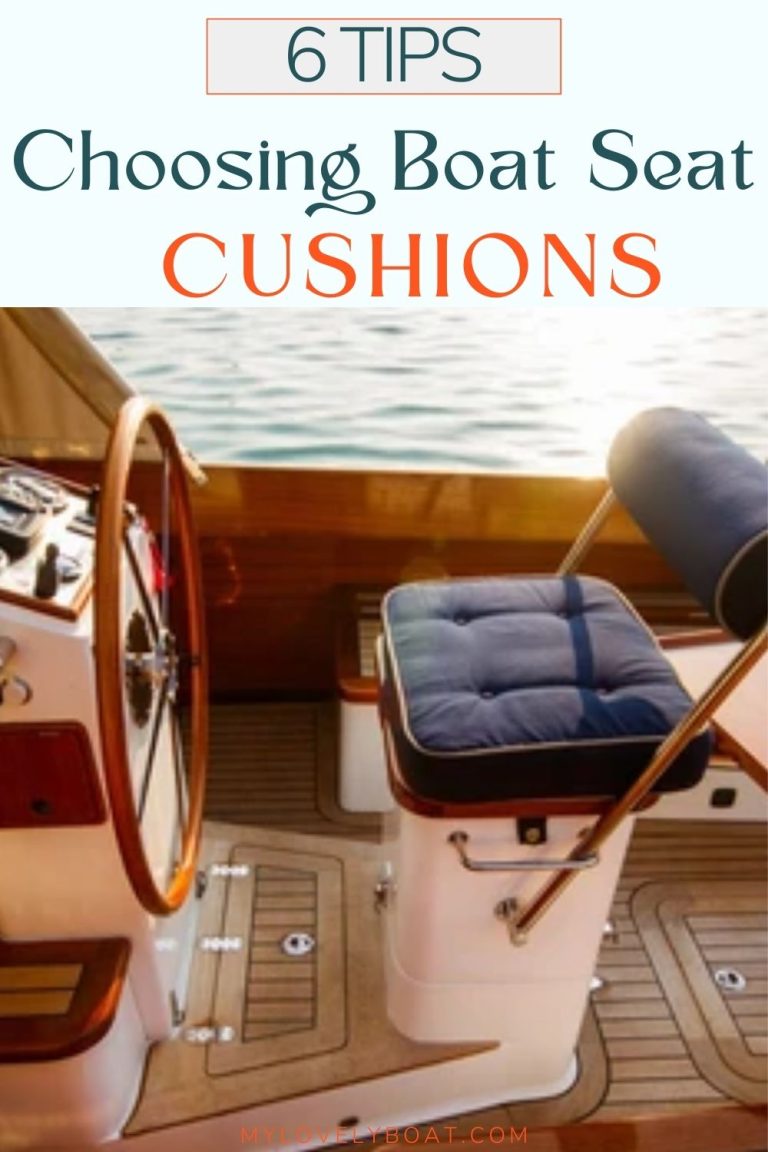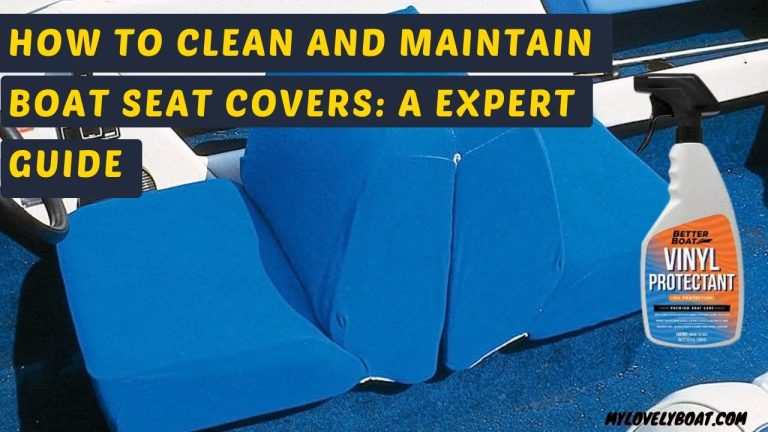
Boat seat cushions are essential to a comfortable and enjoyable boating experience. However, they can quickly become dislodged or damaged if not adequately secured.
This article will discuss the importance of securing your boat seat cushion, explore the available cushions, and provide step-by-step instructions for several methods.
Why Secure Boat Seat Cushions?
Securing boat seat cushions is crucial for several reasons.
First and foremost, it ensures the safety and comfort of passengers and crew members by preventing cushions from sliding around or being dislodged during boat operation.
Additionally, securing cushions can help protect them from damage caused by exposure to the elements or being lost overboard.
Finally, adequately secured cushions can improve your boat’s overall appearance and aesthetics, ensuring it looks well-maintained and inviting.
Read more: How to Clean Your Boat Seats: A Comprehensive Guide
Types of Boat Seat Cushions
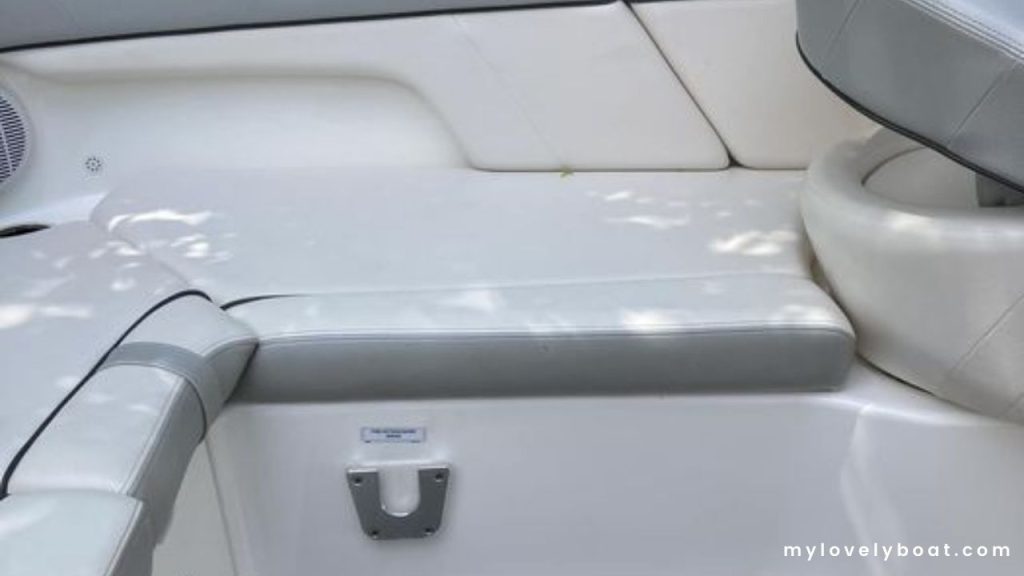
Boat seat cushions are typically made from foam, gel, or inflatable air chambers. Each material has its own set of advantages and disadvantages, so it’s important to choose the right one for your needs.
- Foam Cushions
Foam cushions are popular for boat owners due to their affordability, comfort, and durability.
These cushions are made from various types of foam, such as polyurethane or memory foam, and can be easily shaped to fit the contours of your boat’s seating area.
- Vinyl Cushions
Vinyl cushions are another popular option for boat owners, offering a more durable and water-resistant alternative to foam cushions.
These cushions are made from a vinyl-coated fabric, resistant to mold, mildew, and UV damage.
Vinyl cushions are easy to clean and maintain, making them an excellent choice for boaters who frequently use their vessels.
- Leather Cushions
Leather cushions are a luxurious and high-end option for boat owners seeking a more sophisticated and elegant vessel look.
These cushions are made from genuine leather or high-quality synthetic materials, offering a soft and comfortable seating surface.
However, leather cushions require more maintenance than others and may not be suitable for boats exposed to harsh weather conditions.
Read more: Make Your Boat Seats Less Slippery: (8 Hacks)
Common Sizes of Boat Seat Cushions
Boat seat cushions come in various sizes to fit different types of boat seats, from small bench seats to large captain’s chairs. Measuring your boat seat before purchasing a cushion is important to ensure a proper fit.
Tools and Materials Needed
To secure your boat seat cushion, you will need the following tools:
Description of Required Materials, Including Straps and Buckles
In addition to the tools listed above, you will need the following materials:
- Velcro strips or industrial-strength adhesive (depending on the method you choose)
- Snap fasteners (optional)
- Straps and buckles (optional)
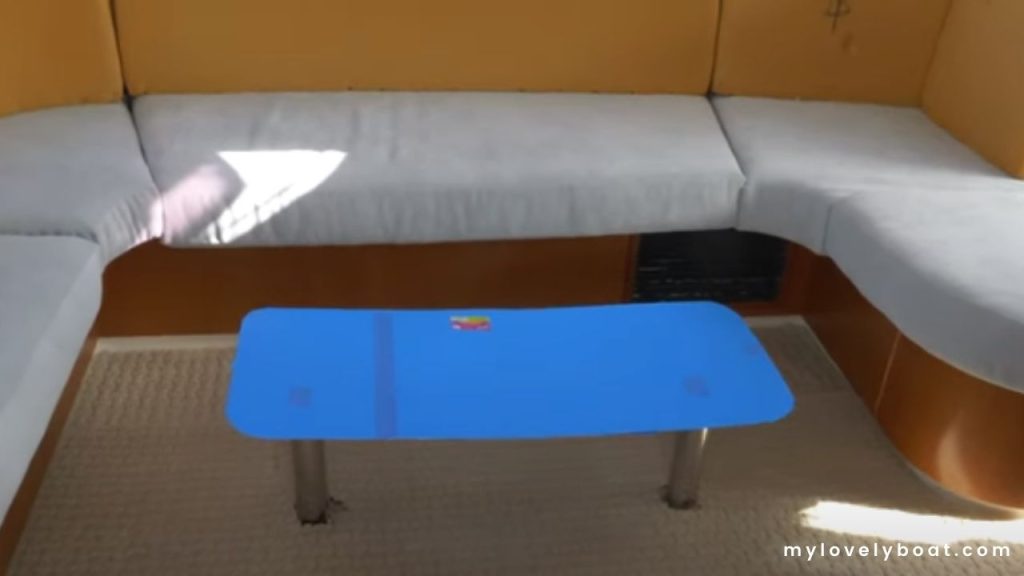
Method 1: Velcro Strips
- Step-by-Step Instructions on How to Use Velcro Strips to Secure a Boat Seat Cushion
- Measure and cut the appropriate length of Velcro strips for your cushion and seat.
- Attach the “hook” side of the Velcro strip to the bottom of the cushion using a strong adhesive or sewing it in place.
- Attach the “loop” side of the Velcro strip to the boat seat using strong adhesive or screws.
- Press the cushion firmly onto the seat, ensuring the Velcro strips are properly aligned and secure.
Pro Tips for Ensuring a Tight Fit
- Clean the surfaces of the cushion and seat before attaching the Velcro strips to ensure a strong bond.
- Use heavy-duty Velcro strips for added strength and durability.
Read more: The Ultimate Guide to Deferent Types of Boat Seats
Method 2: Industrial Strength Adhesive
- Detailed Process for Using Industrial Strength Adhesive to Keep a Boat Seat Cushion in Place
- Clean the surfaces of the cushion and seat to ensure a strong bond.
- Apply a generous amount of industrial-strength adhesive to the bottom of the cushion, following the manufacturer’s instructions for proper use.
- Press the cushion firmly onto the seat, ensuring the even distribution of the adhesive.
- Allow the adhesive to cure for the recommended time before using the seat.
Warnings About Proper Ventilation and Instructions for Safe Use
- Always use industrial-strength adhesive in a well-ventilated area to avoid inhaling harmful fumes.
- Follow the manufacturer’s instructions for proper use and disposal of the adhesive.
Method 3: Installation of Snap Fasteners
Explanation of How Snap Fasteners Work to Hold a Boat Seat Cushion in Place
Snap fasteners comprise a “male” part that snaps into a “female” part. You can easily secure and remove the cushion by installing snap fasteners on both the cushion and the seat.
Important Considerations for Drilling Holes in a Boat’s Interior
When installing snap fasteners, it’s important to carefully plan the placement of the fasteners and drill holes in the boat’s interior. Avoid shooting into any wiring, plumbing, or structural components.
Alternative Strategies for Securing a Boat Seat Cushion
Some alternative strategies for securing a boat seat cushion include using straps and buckles, creating a custom cushion cover with built-in attachment points, or modifying the seat to include built-in cushion support.
Suggested Modification Options for Boat Owners
Boat owners may consider installing built-in cushion supports on their seats or creating custom cushion covers with attachment points for added security.
Tips and Tricks for Maintaining the Life of Your Boat Seat Cushion
Here are some tips and tricks for keeping your boat seat cushions in good condition.
- Regularly inspect your boat seat cushion for signs of wear or damage.
- Clean your cushion with mild soap and water to remove dirt and grime.
- Allow the cushion to air dry completely before reattaching it to the seat.
- Store your cushion in a cool, dry place when not in use to prevent mildew growth.
- Rotate or flip your cushion periodically to distribute wear evenly.
- Replace any worn or damaged attachment components, such as Velcro strips or snap fasteners.
- Consider using a cushion cover to protect the cushion from UV damage and extend its lifespan.
Best boat seat cushion:

I am a freelance writer passionate about watersports and the great outdoors. I have many years of experience in the marine industry, and I enjoy sharing my knowledge and expertise with others so that they can get the most out of their boating experiences. I like fishing, kayaking, and exploring new destinations by boat whenever I have time. Contact Us: Linkedin
